SOS II: Fish in Hot Water
45% of California salmonids are likely to be extinct in the next 50 years.
Home |SOS: Fish in Hot Water from California Trout on Vimeo.
Knowledge is power
CalTrout and UC Davis Center for Watershed Sciences have released State of the Salmonids II: Fish in Hot Water, an in-depth report that details the status of California's 32 native salmon, steelhead, and trout.
The science-based report is clear - if we don't act, we risk losing our native fish species.At the current rate, 45% of California salmonids are likely to be extinct in the next 50 years. This includes 11 of 21 anadromous species (52%) and 3 of 10 inland species (30%). In 100 years, 23 of the remaining 31 species (74%) are likely to be extinct if present conditions continue.
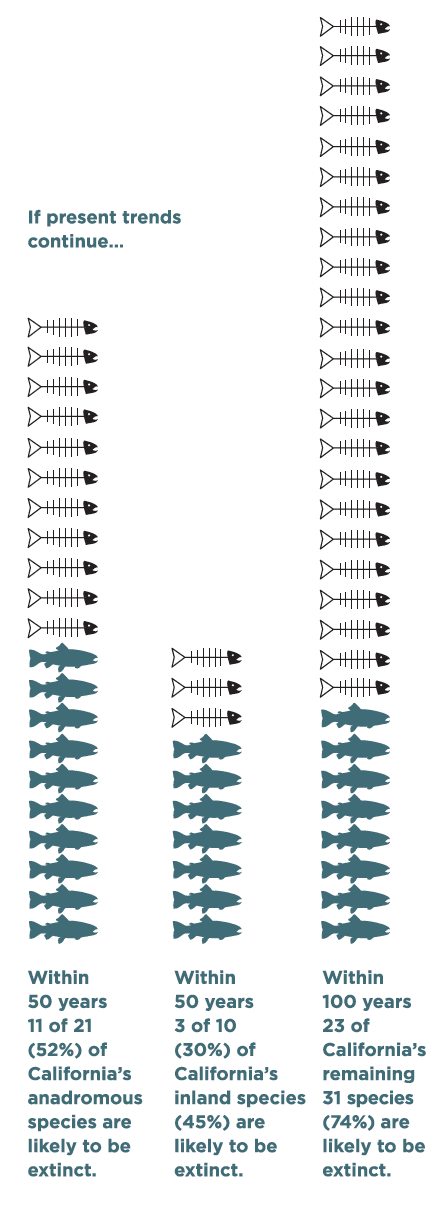
What is threatening our native fish?
Climate change.
Climate change is the major, overarching threat affecting salmonids in California. This report takes a comprehensive look at each salmonid and weighs, among other things, the impact of climate change and 15 other human-caused threats.
Along with the detailed status of each fish, you'll also find our plan to return them to resilience and an outline of CalTrout's work that is already underway to get them there.
In-State of Salmonids II, we explore the following questions:
What is the status of all California salmonids, both individually and collectively?
What are major factors responsible for their present status, especially of declining species?
How can California’s salmonids be saved from extinction?
“If knowledge is power, then this information should be critical in reversing the trend toward a continued decline of our special fishes, with California Trout at the forefront of aquatic conservation.”- Dr. Peter Moyle
What are the findings?
The Level of Concern is increasing for California’s salmonids, but especially for its anadromous, or migratory, species. In general, anadromous species in California face a higher risk of extinction from their range than inland native trout because they depend on access to diverse, high-quality habitat during various parts of their life cycle, and are therefore exposed to numerous human-caused and environmental threats throughout their lives.
There are three main reasons for changes in the Level of Concern across nearly all salmonids since 2008:1. The 2012-16 historic drought in California,
2. Improved information, and
3. Increased understanding of climate change.
For most species, abundance generally declined due to reductions in suitable habitat stemming from drought impacts. An improved understanding of genetics, abundance, and species range information has also positively or negatively impacted species status. For example, the Level of Concern for Central Valley steelhead remained the same (Moderate) since 2008 due to a better understanding of the nature of steelhead/resident Rainbow trout interactions and genetics, despite recent low adult returns. Conversely, the Central Valley fall-run Chinook salmon Level of Concern increased significantly (from Low to High) since 2008 due to a better understanding of the limited abundance of wild individuals without signs of hybridization with hatchery fish.
Finally, the climate change scoring in this report has built upon recent work and a better understanding of the specific impact climate change is likely to have on each species, which led to a score reduction of the climate change factor in nearly all cases.
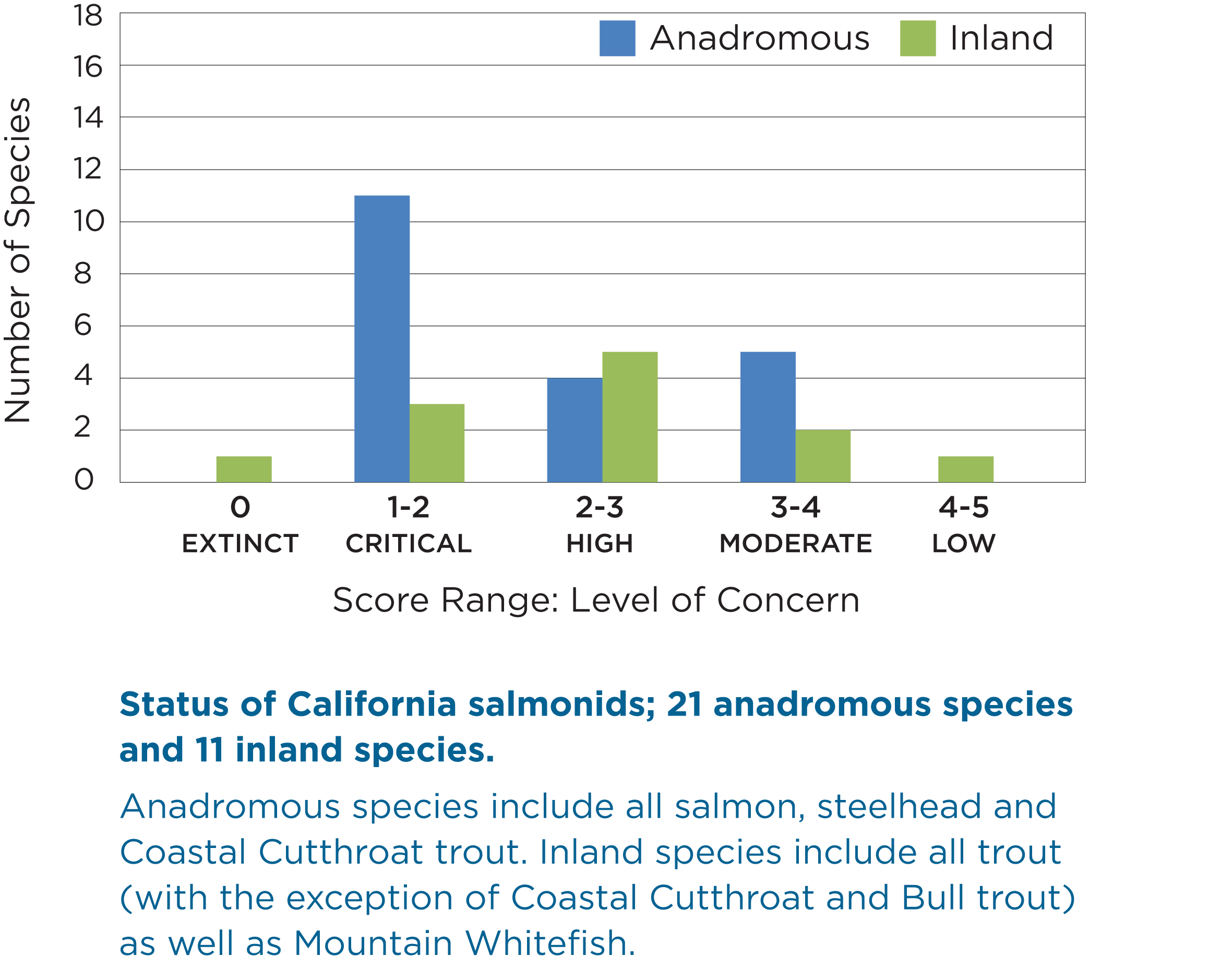

Scores Explained
To graphically represent the Level of Concern for each salmonid in California, a scoring bar is used to represent categories from 0.0 to 5.0
Maps Explained
Each species account includes a range map generated from PISCES (Figure 7), which is a software and data clearinghouse for the best- known ranges for native fishes of California, housed at the University of California, Davis Center for Watershed Sciences.


 Dams block access to historical spawning and rearing habitats. Downstream, dams alter the timing, frequency, duration, magnitude, and rate of change of flows decreasing habitat quality and survival.
Dams block access to historical spawning and rearing habitats. Downstream, dams alter the timing, frequency, duration, magnitude, and rate of change of flows decreasing habitat quality and survival.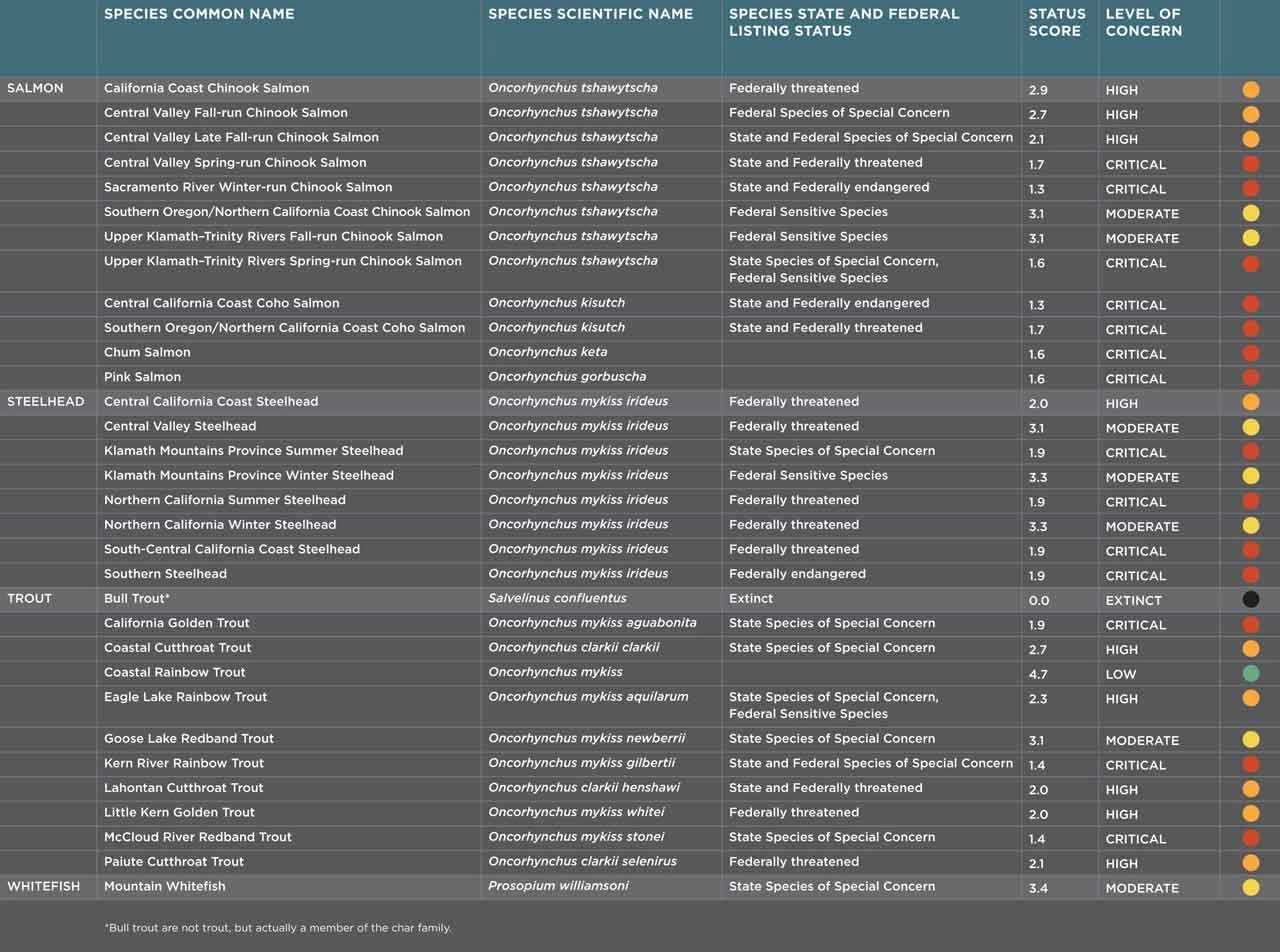
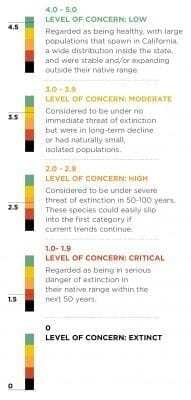
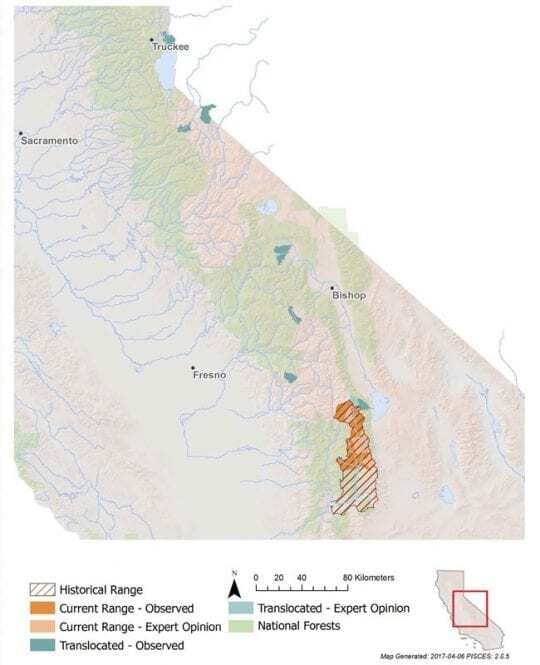

 Human use of streams, lakes, and surrounding watersheds for recreation has greatly increased with population expansion. Boating, swimming, angling, off-road vehicles, ski resorts, golf courses and other activities or land uses can negatively impact salmonid populations and their habitats. The impacts are generally minor; however, concentration of multiple activities in one region or time of year may have cumulative impacts.
Human use of streams, lakes, and surrounding watersheds for recreation has greatly increased with population expansion. Boating, swimming, angling, off-road vehicles, ski resorts, golf courses and other activities or land uses can negatively impact salmonid populations and their habitats. The impacts are generally minor; however, concentration of multiple activities in one region or time of year may have cumulative impacts.













